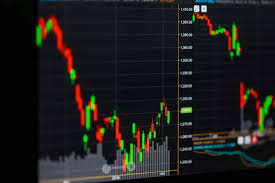Understanding Forex Trading Through Practical Examples 1497293297

Forex trading can seem daunting at first, but understanding the basics through practical examples can significantly enhance your knowledge and confidence. One valuable resource for Forex traders is forex trading example Trading Broker UZ. In this article, we will delve into the fundamental concepts of Forex trading, illustrate them with real-world scenarios, and provide essential tips to help you thrive in this dynamic market.
What is Forex Trading?
The foreign exchange market, commonly referred to as Forex or FX, is the largest financial market in the world, with a daily trading volume of more than $6 trillion. Forex trading involves the buying and selling of currencies with the aim of making a profit from fluctuations in their exchange rates. Unlike stocks or commodities, Forex trading doesn’t take place on a centralized exchange but occurs over-the-counter (OTC), meaning it’s conducted directly between parties through electronic systems or over the phone.
Understanding Currency Pairs
In Forex trading, currencies are traded in pairs. Each currency pair consists of a base currency and a quote currency. For example, in the currency pair EUR/USD, the Euro (EUR) is the base currency, and the US Dollar (USD) is the quote currency. When you buy EUR/USD, you are buying Euros and selling US Dollars, expecting that the Euro will strengthen against the Dollar.
Types of Currency Pairs
Currency pairs are generally categorized into three types: major pairs, minor pairs, and exotic pairs.
- Majors: These pairs include the most traded currencies, such as EUR/USD, GBP/USD, and USD/JPY. They tend to have the highest liquidity.
- Minors: These pairs do not include the US Dollar. Examples are EUR/GBP and AUD/NZD. They are less frequently traded and can be more volatile.
- Exotics: These are pairs that involve a major currency and a currency from a developing or smaller economy, such as USD/TRY (Turkish Lira) or EUR/SEK (Swedish Krona).
Example of Forex Trading
Let’s consider a practical example of how Forex trading works. Suppose you analyze the EUR/USD pair and expect the Euro to strengthen against the Dollar due to positive economic data from the Eurozone.
Step 1: Analyze the Market

You start by conducting fundamental analysis, looking at economic indicators, interest rates, and geopolitical events that might affect the Euro. Additionally, you perform technical analysis using charts and indicators to pinpoint optimal entry and exit points.
Step 2: Open a Trade
Your analysis indicates a strong bullish trend for EUR/USD, so you decide to open a buy position at 1.1000 with a trade size of 1 lot (100,000 units). This means you are buying 100,000 Euros for every $110,000.
Step 3: Set Stop Loss and Take Profit
To manage risk, you set a stop loss order at 1.0950, limiting your potential loss to $500 (50 pips). Conversely, you set a take profit order at 1.1100, which corresponds to a potential profit of $1,000 if your prediction is correct.
Step 4: Monitor the Trade
As the trade develops, you track the price movements closely. After a few hours, the Euro strengthens significantly due to better-than-expected economic data, and the price climbs to 1.1100. Your take profit order is executed automatically, and you close the trade with a profit of $1,000.
Risks in Forex Trading
While Forex trading can be profitable, it carries significant risks. Market volatility can lead to rapid price changes, resulting in losses. Here are a few key risks to consider:
- Leverage: Forex trading often involves high leverage, which can magnify both gains and losses. It is crucial to understand how leverage works and to use it wisely.
- Market Risk: Forex markets can be affected by a variety of factors including economic news, events, and market sentiment, leading to unpredictable price movements.
- Counterparty Risk: The risk that the broker might default on a trade or that the market could see a disruption affecting the execution of trades.
- Liquidity Risk: During times of high volatility, it may be challenging to execute trades at the desired price, leading to slippage.
Tips for Successful Forex Trading
To increase your chances of success in Forex trading, consider the following best practices:
- Educate Yourself: Knowledge is power. Take the time to learn about Forex trading strategies, market analysis, and risk management techniques.
- Practice with a Demo Account: Before committing real money, practice your trading strategies on a demo account to build confidence and refine your skills.
- Develop a Trading Plan: Create a comprehensive trading plan that includes your goals, strategies, and risk management rules.
- Stay Disciplined: Emotions can quickly derail trading success. Stick to your trading plan and avoid making impulsive decisions based on fear or greed.
- Keep a Trading Journal: Document your trades, noting the reasons for entering and exiting. This helps identify patterns and improve future performance.
Conclusion
Forex trading offers exciting opportunities for those willing to invest the time and effort into learning and practicing. By understanding currency pairs, analyzing market trends, managing risks, and following best practices, you can enhance your trading skills and pursue a successful trading career. Remember, like any form of trading, success in Forex requires patience, discipline, and continuous education.